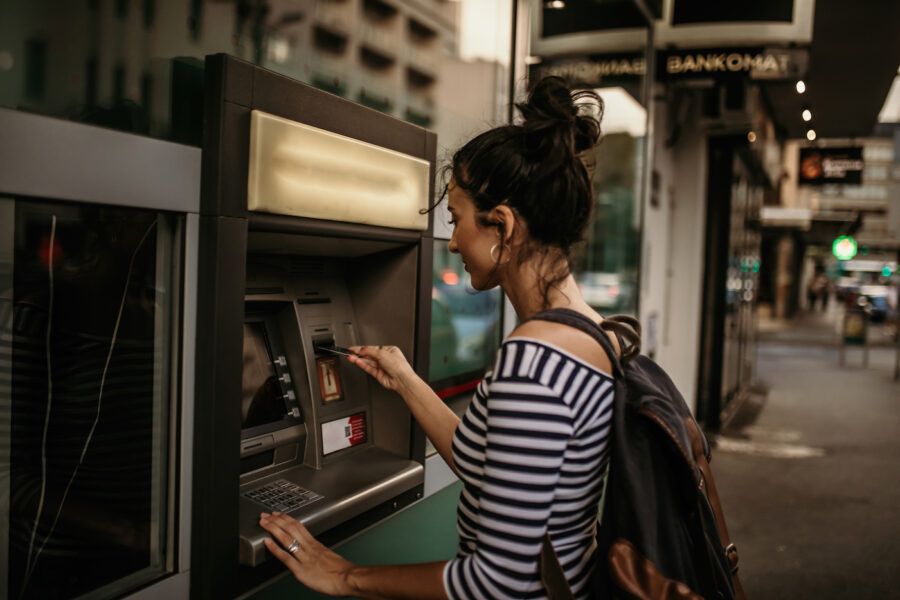In this article:
You generally can't deposit money at any ATM. For security and efficiency reasons, many banks and financial institutions limit cash deposits to their in-network ATMs. Read on to explore the reasons behind this restriction and get guidance on depositing cash at an ATM, ensuring a hassle-free and secure transaction.
Why You Can't Deposit Cash at Any ATM
Banks often restrict cash deposits to in-network ATMs for several reasons. First and foremost, it helps ensure the security of your funds. By limiting deposits to only ATMs owned and operated by your bank, they can closely monitor and control the entire deposit process. In-network ATMs have advanced security measures like surveillance cameras, encryption technology and secure vaults, which help safeguard against theft and fraud.
Moreover, restricting cash deposits to in-network ATMs allows banks to streamline their operations. When you deposit cash at an in-network ATM, the funds are directly credited to your account within the bank's internal system. This streamlined process minimizes the chances of processing errors. By consolidating deposits at specific locations, banks can more efficiently process and reconcile the funds, making it easier for you to track and reconcile your deposits.
Although being limited to certain ATMs for cash deposits may be inconvenient, remembering that it's ultimately for your safety can provide some peace of mind.
Find Digital Checking Accounts
How to Deposit Cash at an ATM
Depositing cash in ATMs is fairly straightforward, but there some things to keep in mind for a safe and fast transaction:
- Be aware of your surroundings. Choose a well-lit ATM location and check for any signs of tampering or suspicious devices attached to the ATM. Be cautious of your surroundings and shield your personal identification number (PIN) while entering it.
- Memorize your PIN. Have your PIN ready to enter when prompted. This helps protect your account from unauthorized access and fraudulent activity.
- Check the deposit network associated with the ATM. Determine the deposit network linked to your ATM, especially when you're in a different location. Major banks usually have their own deposit networks.
- Prepare your debit card and cash in advance. Avoid displaying cash openly to minimize the risk of theft. If you're depositing checks, endorse the back correctly, by signing your name and adding "For deposit only," according to your bank's requirements.
- Request an emailed or printed receipt. After completing your transaction, always get a receipt. This serves as documentation and can be helpful in case of any issues or discrepancies with your deposit.
- Verify the deposited amount before leaving the ATM. Take a moment to check that the deposited amount is accurately reflected in your account balance. If you notice any discrepancies, address the issue quickly.
- Contact your bank if there are errors. If the deposited amount doesn't appear correctly in your account, immediately contact your banking institution. It can identify your transaction using the unique transaction number and rectify any errors.
Are ATM Deposits Instant?
ATM deposits aren't always instant because the processing time can vary depending on the specific ATM and your banking institution's policies. Sometimes, the deposited funds might take time to be available in your account. Some ATMs do offer instant deposits, and the funds are available immediately. However, other ATMs may have longer processing times. In most cases, if you make a cash deposit before the cutoff time of the business day, the funds will be credited on the same day.
It's also important to note that weekends, holidays and cutoff times for processing may affect when the funds become available, so plan accordingly and check your bank's deposit policies.
Do ATMs Charge Fees?
ATMs can charge fees, but it depends on the network, location and your own bank. You might encounter fees when you use an ATM not operated by your bank or outside their network. These fees include an out-of-network ATM fee from your bank and a surcharge fee imposed by the ATM owner. The out-of-network ATM fee usually ranges from $2 to $5 per transaction, while the ATM owner's surcharge can be $1 to $4 or more.
These fees can quickly add up, so knowing how to avoid them is valuable. The easiest way to avoid ATM fees is to stop using non-affiliated ATMs and plan to avoid unnecessary costs. Some banks may have fee reimbursement programs or partnerships with specific ATM networks to offer fee-free or reduced-fee access for their customers, too, so check with your bank to see what networks they're a part of.
The Bottom Line
While it may be inconvenient to have limitations on cash deposits at ATMs, understanding the reasons behind these restrictions can provide peace of mind. When depositing cash at an ATM, keep safety in mind and double-check receipts.
Being knowledgeable about potential fees associated with using non-affiliated ATMs and planning ahead can avoid unnecessary costs. By being informed and prepared, you can successfully navigate ATM cash deposits while safeguarding your funds and minimizing fees.


